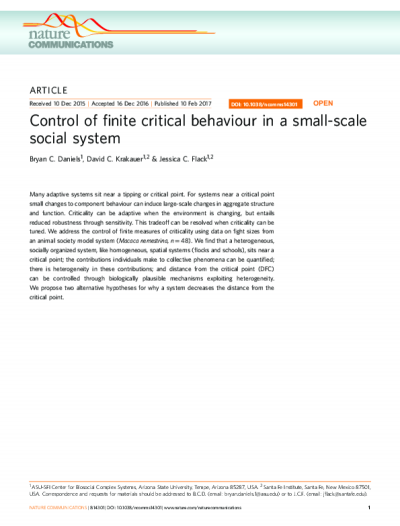Boundary Object or Bridging Concept? A Citation Network Analysis of Resilience

Many recent studies observe the increasing importance, influence, and analysis of resilience as a concept to understand the capacity of a system or individual to respond to change. The term has achieved prominence in diverse scientific fields, as well as public discourse and policy arenas. As a result, resilience has been referred to as a boundary object or a bridging concept that is able to facilitate communication and understanding across disciplines, coordinate groups of actors or stakeholders, and build consensus around particular policy issues. We present a network analysis of bibliometric data to understand the extent to which resilience can be considered as a boundary object or a bridging concept in terms of its links across disciplines and scientific fields. We analyzed 994 papers and 35,952 citations between them to reveal the connectedness and links between and within fields. We analyzed the network according to different fields, modules, and sub-fields, showing a highly clustered citation network. Analyzing betweenness allowed us to identify how particular papers bridge across fields and how different fields are linked. With the exception of a few specific papers, most papers cite exclusively within their own field. We conclude that resilience is to an extent a boundary object because there are shared understandings across diverse disciplines and fields. However, it is more limited as a bridging concept because the citations across fields are concentrated among particular disciplines and papers, so the distinct fields do not widely or routinely refer to each other. There are some signs of resilience being used as an interdisciplinary concept to bridge scientific fields, particularly in social-ecological systems, which may itself constitute an emerging sub-field.
- Author (aut): Baggio, Jacopo
- Author (aut): Brown, Katrina
- Author (aut): Hellebrandt, Denis
- Contributor (ctb): ASU-SFI Center for Biosocial Complex Systems







